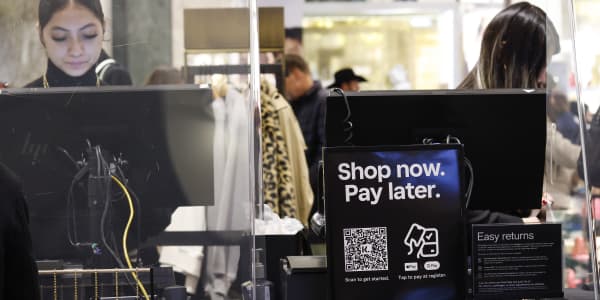Forecasts for the holiday shopping season are strong, because economic indicators generally are as well: the stock market, wages and consumer confidence are all up.
Bain & Company is forecasting growth 3.5 percent to 3.9 percent. The National Retail Federation is anticipating a rise between 3.6 percent and 4 percent.
Those numbers though, don't tell the whole story. An uptick in sales will not benefit all retailers uniformly. There will be winners and losers in the holiday season. This is what, and how, industry advisors and executives will be watching the next two months.
Discount spiral
Same-store sales is an important metric for the Street, but what industry advisors are most concerned about is how much money retailers make during the season.
Avoiding the discount spiral can be challenging. With a few clicks on a smartphone, shoppers can quickly see where they can buy the cheapest items. Further, retailers in bankruptcy — or trying to avoid bankruptcy — are likely to have blowout sales. Sears, for example, has already put the whole store on sale, offering "first-of-their-kind" discounts ranging from 10 to 50 percent at Sears stores, and 10 to 40 percent at Kmart. Those sales may have an impact on competitors like J.C. Penney, who has been looking to encroach on Sears' territory with appliance sales.

Sales are also happening earlier. On Nov. 1, Amazon was one of the first to release its Black Friday deals, with more than 100 million items discounted up to 30 percent.
Vendor support
When asked which retailer an advisor was most worried about this holiday season, he responded with "it's the one I'm not worried about I'm worried about."
Vendors are increasingly wearing the pants in their relationship; if they get spooked about a company's long-term well-being they can pull their products in a chain of events that can propel a company into bankruptcy. This dynamic can happen even with retailers not on death watch. Appliances and electronics retailer HHGregg filed for bankruptcy several months after last holiday season, a move that took many industry insiders by surprise. One of its core problems was that vendors had stopped supporting it through the holidays.
Buy online, pick up in store
Retailers have been focusing on ramping up their online shopping for years. More recently though, they have been focusing on getting shoppers to pick up those purchases in store. In doing so, stores save themselves shipping costs.They also get the buyers to shop more, picking up otherwise unintended merchandise. Stores like Kohl's have sought to increase in-store pick up by rewarding those who do with loyalty points. Earlier this year, Wal-Mart rolled out its in-store pick up discount. It has also has been charging customers more online than its stores, according the Wall Street Journal.
Amazon's private-label push
The e-retailer has been leaning hard on its private label offerings and the holidays are an opportunity for it to further push these initiatives. Amazon has introduced more than than 20 private-label brands in the past two years in categories like clothes, electronics, groceries, according to Bain. It is also using its search technology to help promote those brands. If a shopper searches for an item on Alexa that is offered by Amazon private label, Alexa first recommends the private-label products 17 percent of the time, according to Bain. On the Amazon website, its private-label products make up an average of 11 percent of first-page search results.
Is fashion enough?
Fashion, which one drove shoppers to stores in the past, no longer has the pull it once did as millennials spend more on experiences than clothes. In-store sales of clothing and accessories grew 0.6 percent from January through September of this year, with stronger growth seen in food, and beverage, restaurants and furniture. But retailers are not giving up using apparel to help drive in traffic. Retailers continue to focus on designer exclusives and high-margin private label offerings. Macy's, for example has said it is looking to shift its combination of exclusives and private label offerings from 29 percent to 40 percent over time.
WATCH: What consumers want this holiday season

Correction: An earlier version of this story misstated the National Retail Federation's holiday forecast.




